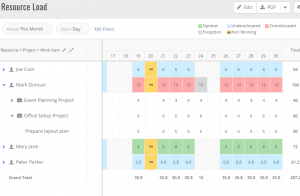Canandaigua, N.Y.
I appreciate any and all coverage by the mainstream media that educates the public on issues of personal finances. However, I have never been able to unlock the key to understanding which issues the media elects to report on at any given time. What is clear, though, is that when one part of the media reports on an issue, it gets covered everywhere and often.
The two personal finance issues that seem to be in the media the most these days are preparing for and living in retirement and our ever-increasing student loan debt and the way that it is impacting the career and lifestyle choices of those burdened with it, as well as other financial issues facing our young people.
Although we have talked a fair amount about it, I would like to revisit some of the financial issues facing our young people in this column.
At a recent CARE presentation at Wayne High School, we talked, as we always do, about the need for their generation to save more for retirement, healthcare and their children’s education than their grandparents, parents or even older brothers and sisters had to, but also the need to save six to eight months of net salary for an almost inevitable job loss.
Young people are not even phased when they hear that all the statistics indicate that they will lose at least one job during their work life, if not several. What really does get their attention, however, are the statistics on the decreasing number of workers that will be available in the future to support retiree benefits, pay for subsidized healthcare and pay down the national debt, or even the interest on it, because those workers are them.
One report notes that between 1945 and 1965, the decline in worker to social security beneficiary ratios went from 41 to 4 workers per beneficiary. Today, there are just 2.9 workers per beneficiary. By 2030, there will be two, and projections indicate it will continue to fall to one and even below. To my knowledge, these projections don’t take into account the acceleration in the number of Americans going on disability, but it also doesn’t factor in a major shift in our immigration policies, which may result in an influx of new workers. These statistics alone present a powerful incentive for young people to save.
When we talk about how willing or happy they might be about paying not only for retirees, but to subsidize other people’s healthcare and to pay down the national debt, or even the interest on it, it would be an understatement to say that they are less than enthusiastic.
When we talk about student loan debt, I tell students that I wish that they would listen to National Public Radio regularly for one month. Instead of just reading about the stories of people burdened with student loan debt, they could hear them talk about it in their own words. They would hear countless stories of people whose lifestyle and career choices have been limited — weddings called off, couples who don’t think they will ever be able to afford a home or children, careers they cannot afford to pursue and so many other things they no longer aspire to.
The takeaway is always the same. Avoid debt, but if you must incur it, minimize it as much as possible, especially student loan debt, and, even as a young person, start, as soon as you have that first job, to save for a job loss, retirement and future healthcare expenses, beyond those that may be covered by insurance, which no doubt will be more in the future.
Next time — what to do about all that retirement advice as you prepare to exit the workforce.
— John Ninfo has spent 38 years in and around bankruptcy courts, 20 of them as a judge. He founded the National Credit Abuse Resistance Education (CARE) Program, and hopes to educate more people about their personal finances through his column.
Read more on Brighton-Pittsford Post
(432)





